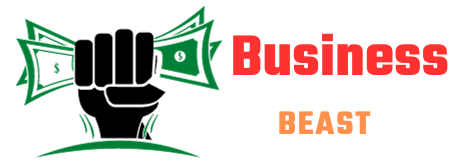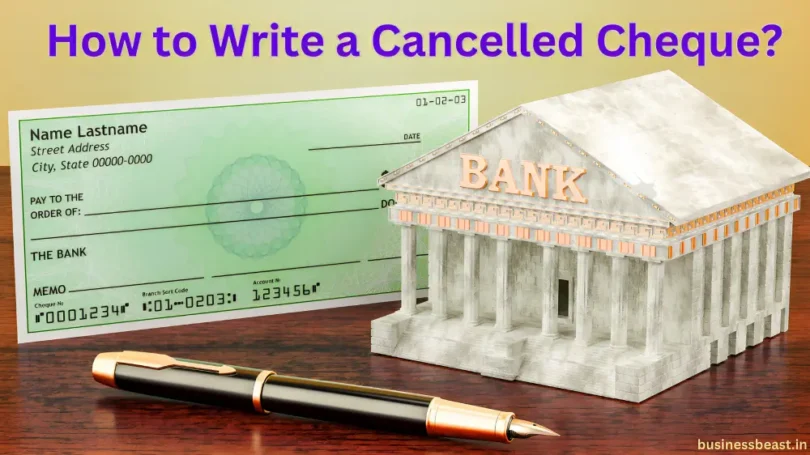The world has been overtaken by the internet, which has altered previous methods of operation. Customers may access services like cash withdrawal and money transfer online instead of having to visit bank offices thanks to the conveniences offered by internet banking. But, you need to understand the meaning behind cancelled cheques as well as the circumstances in which it may be useful.
What is a Cancelled Cheques?
A piece of paper with the word “cancelled” printed in between the two crossed lines is called a cancelled cheques. If a mistake is made when writing a cheque, the owner crosses the cheque with two lines and writes “cancelled” on it. A cancelled cheque is not good for representation at any bank, and the amount indicated on the cheque cannot be withdrawn. The bank name on a cancelled cheque is official evidence of a person’s bank account. Name, account number, IFSC code, MICR code, branch name and address of the bank, and cheque number are all contained in it.
Uses of Cancelled Cheques
A cancelled cheques is needed for the following reasons, among others:
For EPF withdrawal: A cancelled cheque is needed to take money out of your Employee Provident Fund (EPF) account.
For electronic clearance service: The Electronic Clearing Service (ECS) facilitates the movement of funds between bank accounts. You must give your bank a cancelled cheque to allow this service on your account. This is a must for turning on your account’s ECS feature, which will let you send money to other accounts quickly and securely.
For EMIs: An official cheque cancellation will be required by your bank or Non-Banking Financial Company (NBFC) before settling your Equated Monthly Installments (EMIs) for a loan or credit amount. To complete your EMI payments, this is a necessity. To verify your bank account, which will be used to automatically deduct the monthly instalment amount from it, a cancelled cheque is frequently needed.
For Demat Account: You will be asked to provide certain Know Your Customer (KYC) documentation, such as proof of identity and address while opening a Demat (Dematerialized Securities) account. Together with this paperwork, a cancelled cheque must be submitted. Your Demat account will be linked to your bank account, which is often validated by a voided cheque, to buy and sell shares.
For Insurance: Your bank account documentation will be needed when you buy an insurance policy. A cancelled cheque can be submitted as one method of doing this. When processing premium payments and other financial transactions about your policy, the insurance company may want documentation of your bank account, which is provided by a cancelled cheque.
How to Write a Cancelled Cheques?
Now that you know what a cancelled cheque is, here’s how to make one so you can use it to help with application processing. Simply follow the steps listed below to write a cancelled cheques:
- Step 1: Take a fresh cheque out of the cheque you want to cancel. On the cheque, you should not sign anywhere.
- Step 2: Use a blue or black pen to make two parallel cross lines across the cheque. The two ends should be connected by the lines. Give yourself enough space between the two lines to accommodate writing.
- Step 3: Type “CANCELLED” in capital letters between the two lines. You could write in lowercase as well.
- Step 4: Never sign a cheque that has been cancelled. You might have to give it if a bank or other organization asks for it with your signature on it. You should, however, find out from a senior bank official whether signing is necessary or not. You might ask the person asking to sign your cancelled cheque for a written statement if you feel that this is a dangerous situation.
Points To Keep In Mind While Writing a Cancelled Cheques
Following certain instructions is essential when writing a cancelled cheque to guarantee that the cheque fulfils its intended function and protects the privacy of your financial information. The following crucial considerations should be made before getting ready to cancel a cheque:
Avoid Adding Any Dеtails: Writing a cancelled cheque must be done according to specific guidelines to ensure that it serves the intended purpose and safeguards the confidentiality of your financial information. When preparing to cancel a cheque, the following important factors need to be taken into account:
Handlе With Carе: Treat the voided cheque with caution. Don’t fold it, rip it, or do anything else to harm it. Maintaining the cheque’s condition is essential since any damage could make the text hard to see. Because banks and other financial institutions rely on this information to perform a range of transactions, a damaged cheque may cause delays or rejection.
Record Cheque Details: It is recommended that you keep a record of the cancelled cheque number and the reason it was issued. Should there be any disagreements or conflicts in the future, this record may be useful. For instance, keeping a record of the transaction’s purpose can help track and verify payments if you’ve given a cancelled cheque to set up an electronic funds transfer (EFT) for a certain service.
Be Cautious With Recipients: Cancelled cheques should only be given to reliable and authorized people or entities. Giving a cancelled cheque to a stranger puts you at risk for bank account fraud and identity theft. Before you give someone a cancelled cheque, you should be cautious and make sure you have a good cause.
Risk Associatеd With Cancеllеd Chеquеs
There are various risks connected to the cancelled cheque as well. For your reference, let’s talk about a few of the risks:
- Fraudulеnt Usе: An important risk is the possibility of fraudulent use. If a cancelled cheque leaf gets into the wrong hands, someone might try to use the banking information it gives for illicit financial activities. This could result in cash losses or unauthorized transactions.
- Idеntity Thеft: Identity theft is another concerning possibility. A cancelled cheque’s financial information may be used to commit identity theft, which might give criminals access to your bank account and private data. Identity theft can have several negative effects on your personal safety and financial security.
- Privacy Concеrns: Sharing cancelled cheques raises privacy problems. Doing so exposes your sensitive financial information to unnecessary parties, which can potentially compromisе your privacy and financial security and privacy.
Reducing these risks and controlling your credit line depends on ensuring secure handling. Among the safest methods of managing cancelled cheques are to destroy them before discarding them, talk about them only with trustworthy people, and closely monitor your bank statements for any suspicious behaviour.
Conclusion
A cancelled cheques cannot be used to withdraw money from a bank, to put it simply. Except for withdrawals, it can be used for many purposes, including opening a Demat account, business line of credit, KYC, EPF, ECS, EMIs, loans for new business ventures, and insurance products. Usually, a cheque is cancelled to prevent misuse.








Leave a Comment